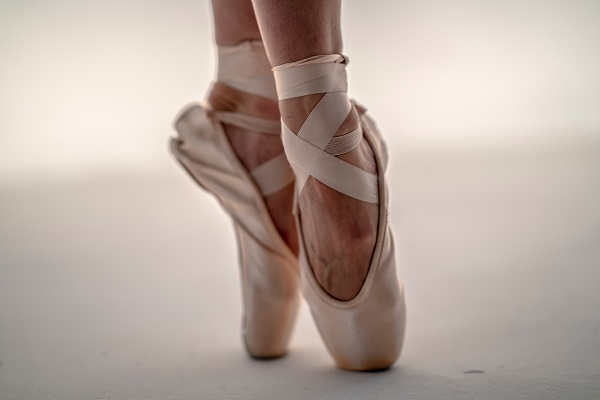Our Latest Blogs

5 Ballet Positions Every Dancer Should Master (with Video)
There are five ballet positions that every dancer should master. These ballet positions are essential for any dancer, regardless of their level or experience. In this blog post, we will discuss each of these ballet positions in detail. We will provide pictures and videos to help you better understand how to execute these ballet positions correctly. So, without further ado, let's get started!
What are the 5 ballet positions?
1. First Position
First position in ballet is a foundational position in which dancers stand with their feet together and their heels touching. This position is used to start many ballet exercises and positions.
2. Second Position
The second position in ballet is a basic stance used by dancers. It is achieved by positioning one's feet close together with the heels touching and the toes pointed outward. This position allows for better balance and range of motion.
3. Third Position
The third position in ballet is a stance where the dancer's feet are positioned one in front of the other with the back foot turned out and the heel of the front foot pointing towards the floor.
4. Fourth Position
The 4th position in ballet is a basic stance that dancers use to maintain balance and stability. It is also used as a starting point for many ballet movements. The position is achieved by standing with feet together and legs turned out to the sides.
5. Fifth Position
The fifth position in ballet is a stance in which the dancer stands with one foot in front of the other, turned out so that the toes point away from each other. The heels are close to each other, and the weight is evenly balanced between both feet. This position is used in many ballet exercises and positions, and is often considered to be the most stable and balanced stance.
Why is it important to know and master the 5 basic ballet positions?
The 5 basic ballet positions are the foundation of all ballet technique. They provide the dancer with a strong base from which to engage the muscles needed for more complex movements.
Without a solid understanding of the 5 basic positions, it would be difficult to execute more advanced steps accurately.
Furthermore, the 5 positions help to correct alignment and ensure that the dancer is using proper technique.
By mastering the 5 basic positions, dancers can build a strong foundation for their dancing and avoid developing bad habits that could lead to injuries. As such, it is clear that learning and mastering the 5 basic ballet positions is essential for any aspiring ballerina.
Is there a 6th position in ballet?
No, there is not a 6th position in ballet. The five positions of feet in ballet are en pointe (on the toes), demi-pointe (on the ball of the foot), tendu (stretched out), plie (bent), and releve (raised).
These positions are studied extensively by beginners to master the basic techniques of ballet dancing.
However, once a dancer has developed a strong foundation in these positions, they may begin to explore more creative and intricate ways of moving their feet and legs.
As a result, there is no need for a 6th position in ballet. There are an infinite number of ways to combine the five existing positions, and each dancer has their own unique style.
Ultimately, it is up to the individual dancer to find the positions and movements that work best for them.
How to teach children the 5 ballet positions
1st position: stand with feet together and heels touching. Arms should be in a "V" shape with the palms facing down.
2nd position: start in 1st position. Step one foot to the side and bring the other foot next to it, keeping both feet flat on the ground. The heel of the front foot should be in line with the toes of the back foot. Raise your arms so they are parallel to the ground.
3rd position: start in 1st position. Step one foot to the side and bring the other foot next to it, but this time raise the heel of your back foot so that only your toes are touching the ground. Keeping your arms in a "V" shape, open them so that your hands are now above your head.
4th position: start in 1st position. Step one foot behind you and bring your other foot next to it, keeping both feet flat on the ground. Point your toes so that they are touching each other and raise your arms so they are parallel to the ground.
5th position: start in 4th position but this time instead of keeping both feet flat on the ground, raise your back leg so that only your toes are touching the floor and your heel is raised into the air. Your arms should still be parallel to the ground.
How old can children be to learn the 5 ballet positions?
Children as young as three or four can start to learn the basic positions of ballet.
These first five positions lay the foundation for all future technique and are essential for any dancer who wants to progress in their training.
While the exact names and order of the positions may vary slightly depending on the ballet school, they all build upon one another and provide a strong starting point for young dancers.
The first position, known as plié, is a basic squatting position that helps to stretch and warm up the muscles.
From there, students move into tendu, dégagé, grand battement, and finally, arabesque.
Each position requires slightly different techniques and footwork, but all five positions help to develop strength, flexibility, and balance – essential qualities for any dancer.
With regular practice, dancers of all ages can perfect their technique and learn to execute the positions with grace and precision.
Do you need ballet shoes to perform the 5 basic ballet positions?
No, you don't need ballet shoes to perform the 5 basic ballet positions. You can do them barefoot or in socks.
The important thing is that you have a smooth, slippery surface to stand on so you can glide across the floor easily. Ballet shoes (or pointe shoes) can help with this, but they're not essential.
If you're just starting out, we recommend doing the positions barefoot so you can feel the connection between your feet and the floor.
Once you've mastered the basics, then you can try wearing ballet shoes to see if they help you move more smoothly.
In conclusion, the five ballet positions are: first, second, third, fourth, and fifth position.
Mastering these will give you a strong foundation on which to build your ballet technique. Do them regularly to keep your body aligned and graceful. And have fun!
Ballet is an art form that should be enjoyed.
Why not book a free class for your child to see if ballet is right for them? You can do that here



